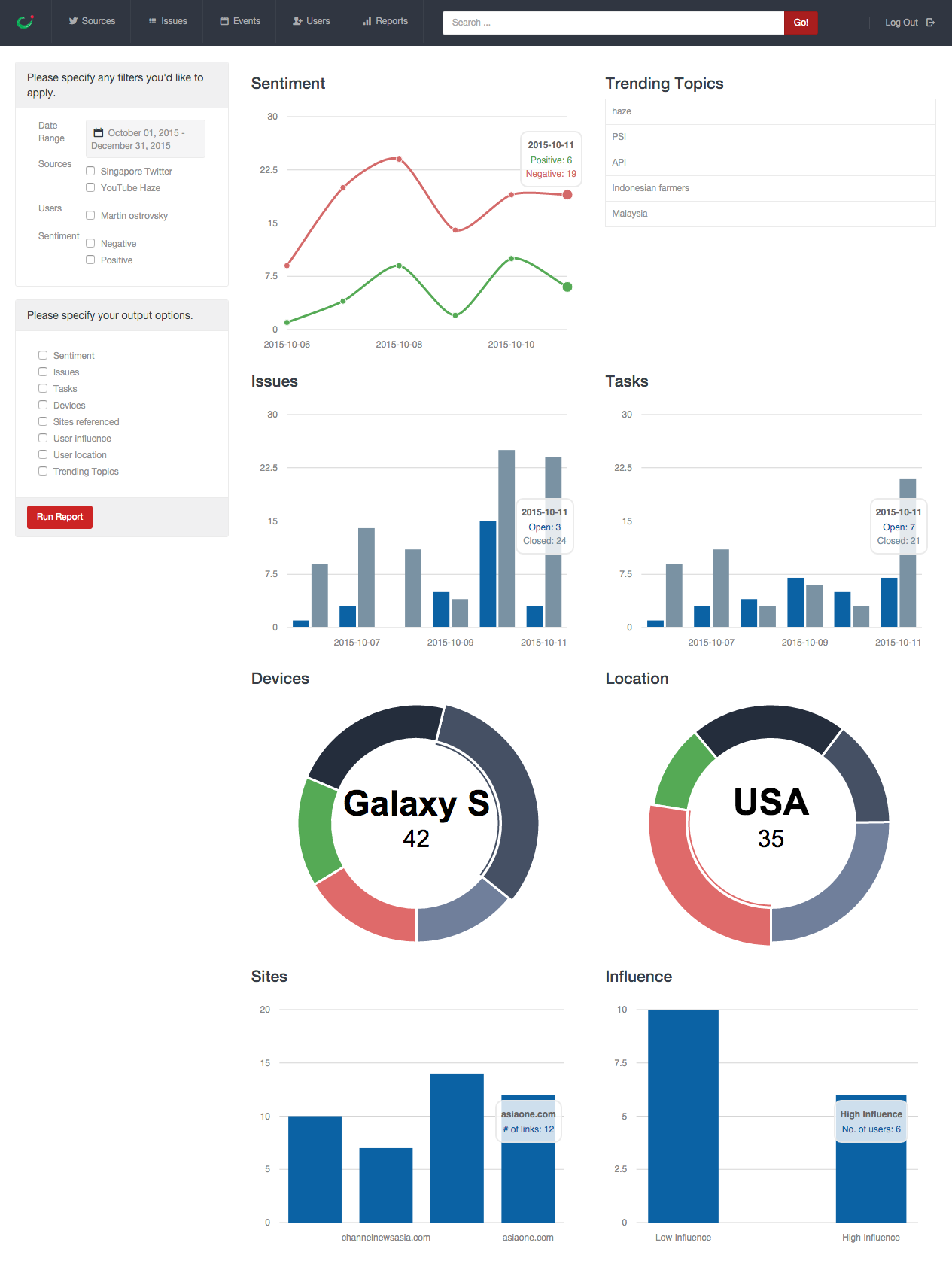CASE STUDY FOR SENTIMENT ANALYSIS IN GOVERNMENT
Addressing citizen's concerns in real-time.
An increasingly digital savvy citizenry requires a government in Asia to create software to recognize and respond to the needs of the people in real-time.
Start Your Free Trial
Government
Today it has become common practice for people to take to the internet, be it Twitter, Instagram, Facebook or personal blogs, to share their day-to-day experiences. Traffic jams, bad service at the passport office, slow-to-respond government websites, however mundane it might seem, people feel compelled to share this information with the world. But where many see this content as being banal, it can be priceless to a well-organized government, looking to improve public services.
Setting up listening tools
The first step in this task is to be able to monitor all relevant public sources of data. Social media, blogs, and niche forums all provide treasure troves of information. Knowing which data you want is key, otherwise you end up having to filter through the noise. Restricting data by geolocation (e.g. only data from Singapore) or by keywords is a popular technique and one that works well in most cases.
Analyzing the data stream
Now that streams of data are coming in, it's time to use Repustate. The text analytics API that Repustate provides analyzes each and every piece of text as it comes into the government data centres. Sentiment and semantic features are extracted from each piece of text and grouped together according the user's wishes. Data can be segmented according to time of day, sentiment, gender of the user, nature of the data (complaint, compliment, question etc.). But the real insights occur when data is automatically segmented according to semantic meaning.
A screen shot from one of the reporting tools government officials can use to dig into the data they've collected.

Semantic clustering
While analyzing data by its metadata is interesting and useful, the real value comes from a technique called semantic clustering. Using Repustate's semantic analytics capabilities, this government ministry was able to cluster similar data by the underlying semantic meaning. Data that was about traffic jams could all be grouped together automatically. Data about long waits at a government office or a poor customer service experience could also be grouped together, providing government officials with a very precise picture of which areas require focus. Priorities can be set more quickly, resources can be allocated more efficiently, and better government can be delivered more rapidly.
Predictive analytics
With historical data and semantic clustering, the final stage in the government's analytics could take place: predictive analytics. By extracting several features from the historical data as well as the semantic and sentiment analysis, it might be possible to create predictive models to anticipiate bottlenecks in various public services. If the government could predict when a particular service might be overwhelmed by demand and deploy sufficient resources in anticipation of such an event, then the citizenry might not experience any downtime of services and maintain a more positive view of their government.